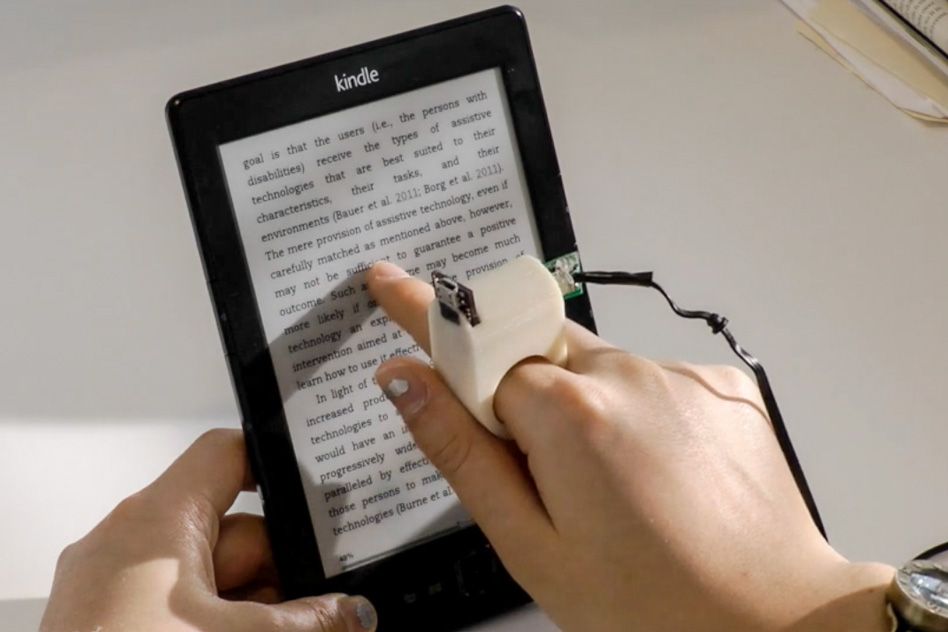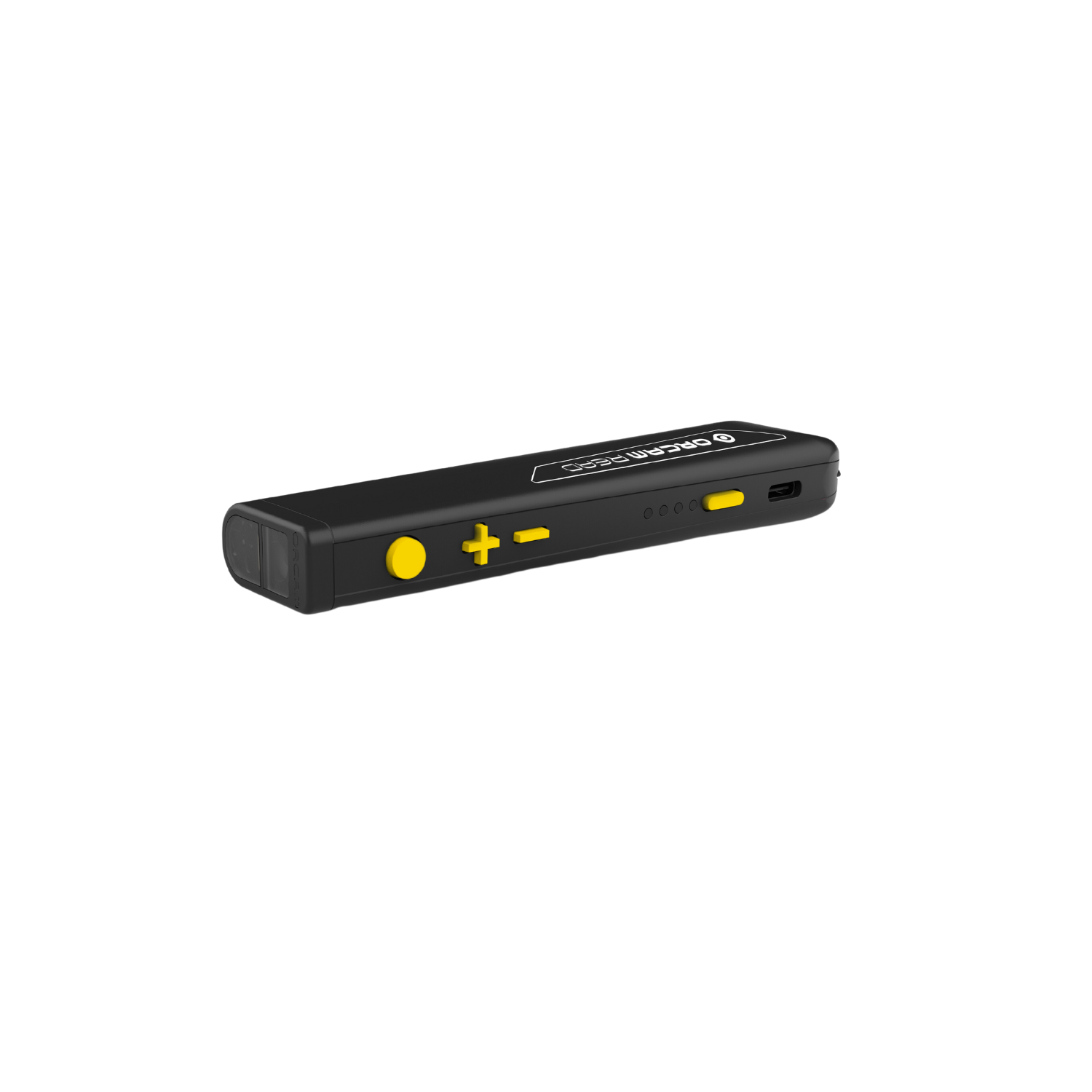Assistive Technology for the Blind: Innovations to Transform Lives
Assistive Technology for the Blind: Innovations to Transform Lives
Blog Article
A Guide to Life-Changing Assistive Modern Technology for the Blind and Aesthetically Impaired
The advancement of assistive technology has actually ushered in a transformative era for individuals that are blind or visually damaged, offering devices that boost autonomy and enrich daily experiences. Technologies such as wise navigating tools and AI-driven applications are redefining how customers communicate with their environments, while obtainable reading solutions and smart home innovations promise to additional boost the top quality of life. As these innovations remain to develop, one must take into consideration not just their functionalities but likewise their influence on cultivating freedom and inclusivity. What does this mean for the future of access?
Smart Navigation Devices
Smart navigating devices are transforming the way people that are blind or aesthetically impaired interact with their environment. These innovative innovations, which integrate GPS, audio responses, and haptic signals, provide users with important details about their environments, boosting their freedom and mobility.
One famous example is making use of smart canes furnished with sensors that detect obstacles and provide real-time comments via vibrations or audio hints. These tools enable users to browse complicated environments, such as busy streets or crowded public spaces, with boosted self-confidence. Furthermore, wearable tools, such as clever glasses, are being established to aid in identifying faces, checking out message, and recognizing objects, additionally boosting the individual's spatial recognition.
Moreover, clever navigation tools are progressively incorporating expert system to examine data and adjust to individuals' choices. This individualized strategy not just improves navigating efficiency but also cultivates a sense of empowerment among customers. As modern technology remains to advancement, the capacity for smart navigating tools to create an extra accessible and comprehensive globe for people who are visually damaged or blind continues to be appealing, inevitably reshaping their everyday experiences and communications.
Cutting-edge Mobile Apps
Mobile applications are becoming powerful devices for aiding people who are blind or visually damaged, offering a series of performances that improve daily living. These apps harness progressed modern technology to promote everyday tasks, improve access, and advertise independence.
One group of cutting-edge mobile applications concentrates on aesthetic recognition. Applications like Be My Eyes link customers with sighted volunteers by means of video telephone calls, making it possible for real-time help for tasks such as reviewing tags or browsing unknown settings. Similarly, apps like Seeing AI make use of expert system to define surroundings, reviewed text, and recognize items, providing individuals with important information at their fingertips.
One more substantial area is navigation and positioning. Apps such as Aira and Close-by Traveler provide audio assistance, assisting customers browse city areas easily. They use customized assistance, enabling an extra certain exploration of the setting.
Additionally, health and wellness and wellness apps cater to specific needs, such as medicine monitoring and fitness tracking. These applications aim to foster a holistic approach to well-being, ensuring that customers can keep their health independently.
Wearable Assistive Instruments
Wearable assistive devices stand for a substantial improvement in technology made to support people that are blind or aesthetically impaired. These gadgets improve movement and freedom by providing real-time feedback about the surrounding setting. Among one of the most noteworthy wearable technologies are clever glasses outfitted with cams and sensing units, which can determine barriers and relay important information with sound cues.

Another innovative option includes wrist-worn tools that make use of ultrasonic waves to identify challenges and provide navigational support. These devices commonly include personalized setups, enabling users to tailor the alerts to their specific requirements.
The combination of expert system in wearable assistive modern technology is also noteworthy, as it continuously enhances the accuracy and responsiveness of these gadgets. In general, wearable assistive devices are transforming the lives of the aesthetically impaired and blind, promoting better autonomy and enhancing lifestyle through ingenious remedies.
Obtainable Reading Solutions
Obtainable reading remedies play a vital duty in making it possible for individuals that are aesthetically damaged or blind to engage with text throughout various formats. These solutions include a variety of tools and innovations created to improve analysis experiences, from typical print materials to electronic material.
One prominent option is Optical Personality Recognition (OPTICAL CHARACTER RECOGNITION) modern technology, which converts printed message into electronic layout, allowing customers have a peek at this website to pay attention to or read the web content using screen viewers. Furthermore, specialized e-readers equipped with text-to-speech capacities provide adjustable reading experiences, allowing users to adjust font sizes and background colors for improved visibility.
Another reliable approach is braille screens, which offer tactile feedback by converting digital text into braille. This allows individuals to check out touch, cultivating better freedom and accessibility to literature. Moreover, mobile applications developed for reading checked papers or publications can empower individuals with immediate accessibility to a huge library of materials.

Smart Home Technologies
Smart home innovations have actually reinvented the means individuals that are blind or visually damaged communicate with their living environments, boosting both freedom and safety and security. These cutting-edge solutions utilize automation and connection to develop an accessible space customized to the demands of users.
Smart audio speakers and voice-activated assistants give hands-free control over various gadgets, enabling users to adjust lights, protection, and temperature measures with straightforward voice commands. This functionality decreases reliance on sighted aid and fosters a sense of freedom. Furthermore, smart illumination systems can be personalized to supply auditory responses or tactile cues, making it possible for people to navigate their homes better.
Moreover, safety and security systems equipped with clever cameras and sensing units can send out real-time alerts to users, improving personal safety without demanding visual confirmation. Automated door locks provide assurance, permitting users to secure their homes effortlessly.
Integrating smart home technologies not just boosts day-to-day living but also urges social communication through linked devices - Smart glasses for the visually impaired. With recurring developments in assistive innovation, the future shows up appealing, as more solutions will arise to additional empower individuals that are blind or aesthetically damaged, making certain a much more inclusive and independent lifestyle
Conclusion
Finally, the developments in assistive technology for the blind and visually damaged stand for a considerable jump towards improving freedom and lifestyle. Smart navigating tools, innovative mobile applications, wearable devices, accessible reading remedies, and clever home technologies collectively foster a comprehensive environment. This assimilation of technology not just improves mobility and day-to-day living but also equips individuals to involve fully with their environments, promoting better freedom and involvement in society.
Technologies such as smart navigation tools and AI-driven applications are redefining how users interact with their environments, while easily accessible analysis here options and smart home technologies assure to further elevate the high quality of life. As innovation continues to breakthrough, the potential for wise navigating tools to produce an extra comprehensive and accessible world for people that are aesthetically impaired or blind stays promising, ultimately improving their day-to-day experiences and communications.
Wearable assistive tools stand for a considerable advancement in innovation made to support people who are blind or aesthetically impaired. Amongst the most remarkable wearable technologies are clever glasses equipped with sensors and cams, which can recognize obstacles and relay critical details with audio hints.
Smart navigating browse around this web-site devices, cutting-edge mobile applications, wearable gadgets, accessible reading services, and wise home innovations jointly promote an inclusive atmosphere.
Report this page